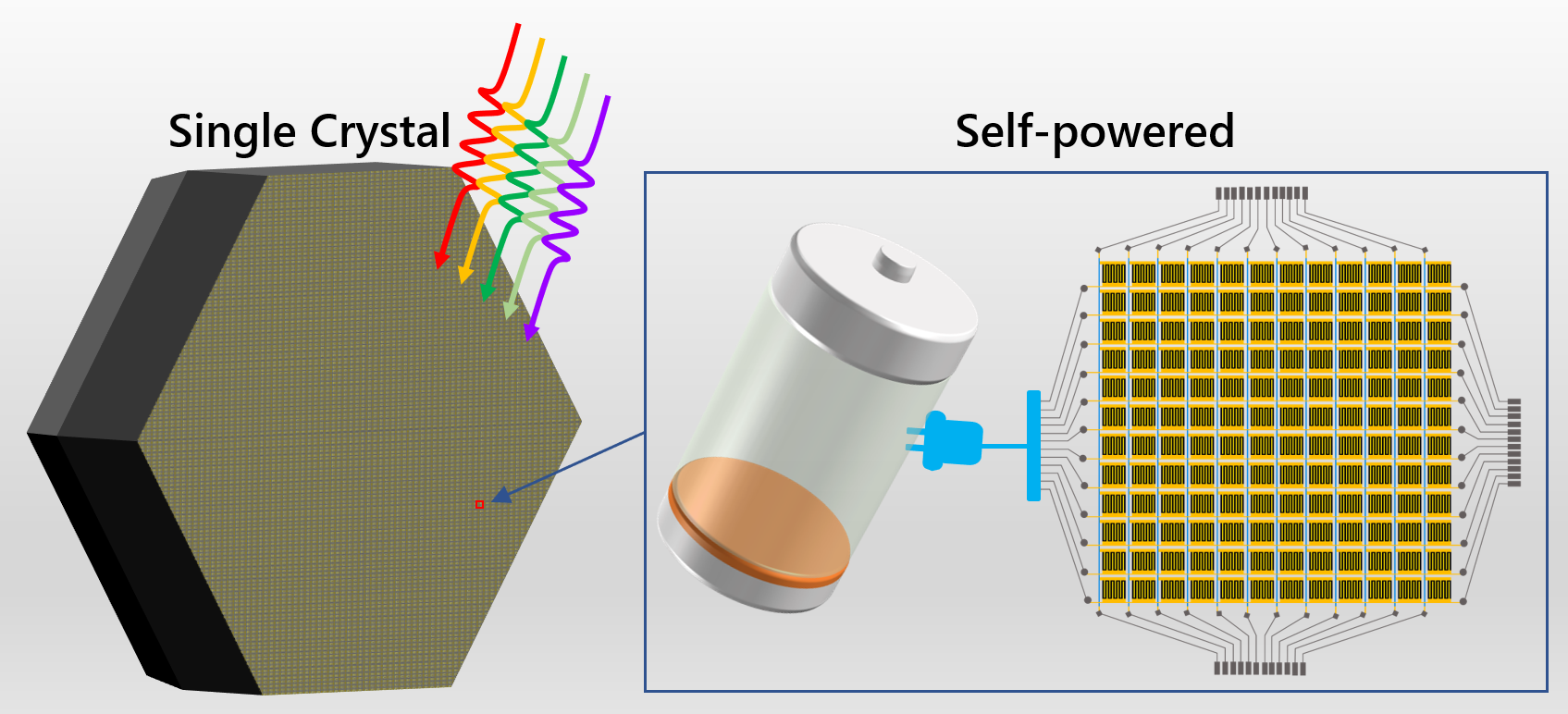Multiple-cation and mixed-halide (FAMACs) perovskites, which are formed by incorporating Cs/MA/Br ions into FAPbI3 perovskites, are promising in applications in high-efficiency photovoltaic and photoelectronic devices.
Phase segregation into yellow non-perovskite phase often occurs during the crystallization process, influencing charge carrier mobility and carrier recombination dynamics, and thereby deteriorating device performance.
Recently, an international research team proposed an efficient strategy for obtaining high-quality perovskite single crystals with size up to five inches. The large and pure phase single crystals could be used to design high-performance self-powered integrated-circuit photodetectors.
Prof. LIU Shengzhong's group from the Dalian Institute of Chemical Physics (DICP) of the Chinese Academy of Sciences (CAS), Prof. LIU Yucheng from Shaanxi Normal University and Prof. Mercouri G. Kanatzidis from Northwestern University (Evanston) are involved in the study.
This work was published in Science Advances on Feb. 10.

Inch-sized high-quality perovskite single crystals formed by suppressing the phase segregation for applications in light-powered integrated circuits (Image by LIU Shengzhong)
The researchers selected a reducing agent (formic acid) for suppressing phase segregation during the crystallization process to obtain very large triple-cation mixed-halide perovskite single crystals.
This strategy yielded state-of-the-art perovskite single crystals with long carrier lifetime, high charge mobility, long carrier diffusion distance, superior uniformity, and long-term stability, thereby facilitating the design of high-performance self-powered integrated-circuit type photodetectors.
Moreover, since the photodetector comprising the crystal exhibited large responsivity, high photoconductive gain, excellent detectivity, and fast response speed, the researchers fabricated an integrated imaging system with uniform photo-response based on a 12 × 12 pixelated matrix of single crystal photodetectors.
"We believe that such a novel design will open new avenues for the applications of perovskite self-powered integrated circuits in devices relevant to imaging applications," said Prof. LIU. (Text by LIU Shengzhong)